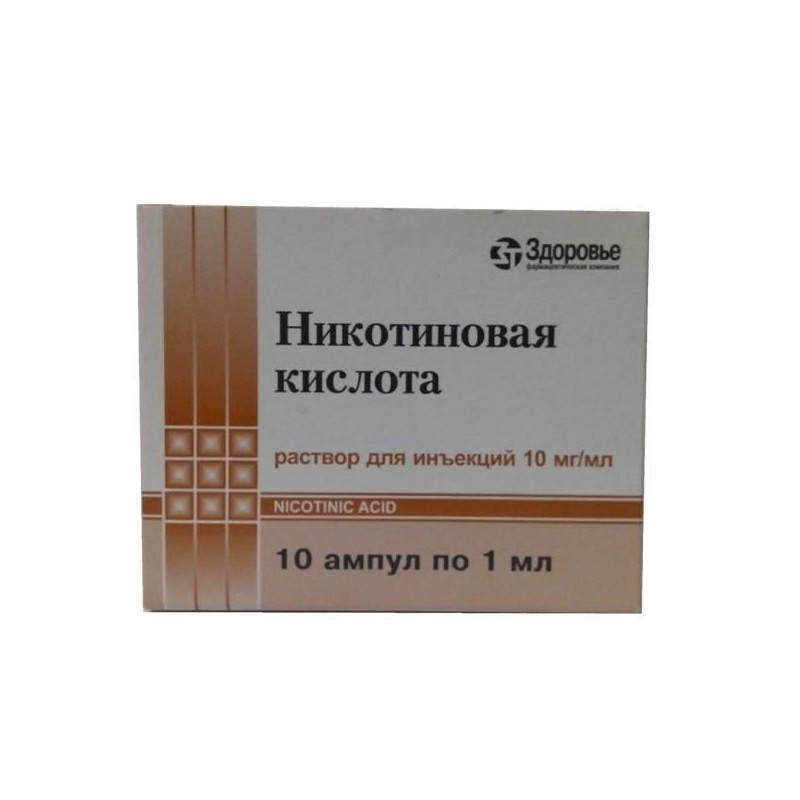



 All payments are encrypted via SSL
All payments are encrypted via SSL
 Full Refund if you haven't received your order
Full Refund if you haven't received your order
Injection
The active substance is nicotinic acid.
10 pieces
NICOTINIC ACID is a replenishing vitamin PP (B3) deficiency, vasodilating, hypolipidemic, hypocholesterolemic. Included in the prosthetic group of enzymes that are carriers of hydrogen: nicotinamide adenine dinucleotide (NAD) and nicotinamide adenine dinucleotide phosphate (NADP), regulates redox processes, tissue respiration, synthesis of proteins and fats, breakdown of glycogen. Inhibits lipolysis in adipose tissue, reduces the rate of VLDL synthesis. Normalizes the lipid composition of blood: reduces the level of total cholesterol, LDL, triglycerides and increases the level of HDL, has anti-atherogenic properties. It has a vasodilating effect, incl. on cerebral vessels, improves microcirculation, increases blood fibrinolytic activity and reduces platelet aggregation (reduces the formation of thromboxane A2). It has detoxification properties. It is effective in Hartnup disease - a hereditary metabolic tryptophan, accompanied by a deficiency in the synthesis of nicotinic acid. It is well absorbed in the pyloric region of the stomach and upper parts of the duodenum. Partially biotransformed in the liver to form N-methyl nicotinamide, methyl pyridone carboxamides, glucuronide and a complex with Glycine. Excreted in the urine.
Prevention and treatment of Pellagra (PP vitamin deficiency); atherosclerosis, hyperlipidemia, peripheral vasospasm, including endarteritis obliterans, Raynaud’s disease, migraine, cerebrovascular accident, including ischemic stroke (complex therapy), angina pectoris, Hartnup’s disease, hypercoagulation, facial neuritis, intoxication of nonhealing wounds, ulcers, infectious diseases, gastrointestinal tract diseases.
Hypersensitivity, gastric ulcer and duodenal ulcer (in the acute stage), marked impaired liver function, gout, hyperuricemia, severe forms of arterial hypertension and atherosclerosis (intravenous administration). Restrictions on the use: pregnancy, lactation.
In / in slowly, in / m, p / k. When pellagra: adults - in / m to 0.1 g, 1-2 times a day for 10-15 days. In ischemic stroke: iv, 0.01-0.05 g.
Conditioned by the release of histamine: redness of the skin, incl. face and upper torso with tingling and burning sensation, feeling of a rush of blood to the head, dizziness, hypotension, orthostatic hypotension (with rapid IV), increased secretion of gastric juice, pruritus, dyspepsia, urticaria. With long-term use of large doses: diarrhea, anorexia, vomiting, abnormal liver function, fatty liver, ulceration of the gastric mucosa, arrhythmia, paresthesia, hyperuricemia, decreased glucose tolerance, hyperglycemia, transient increase in AST, LDH, alkaline phosphatase, irritation of mucous membranes shell of the digestive tract.
In a dry, dark place at room temperature.
A nicotinic acid